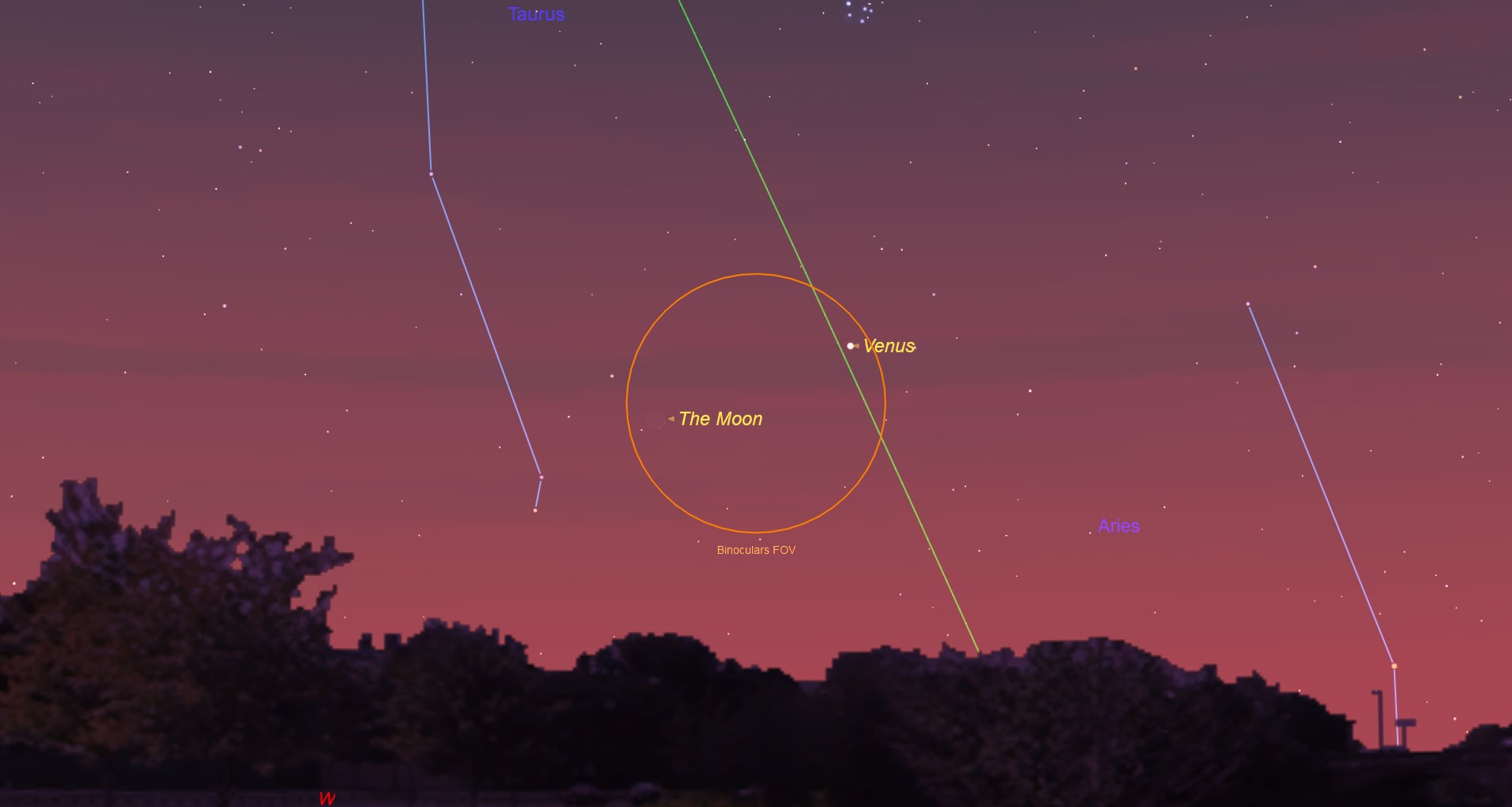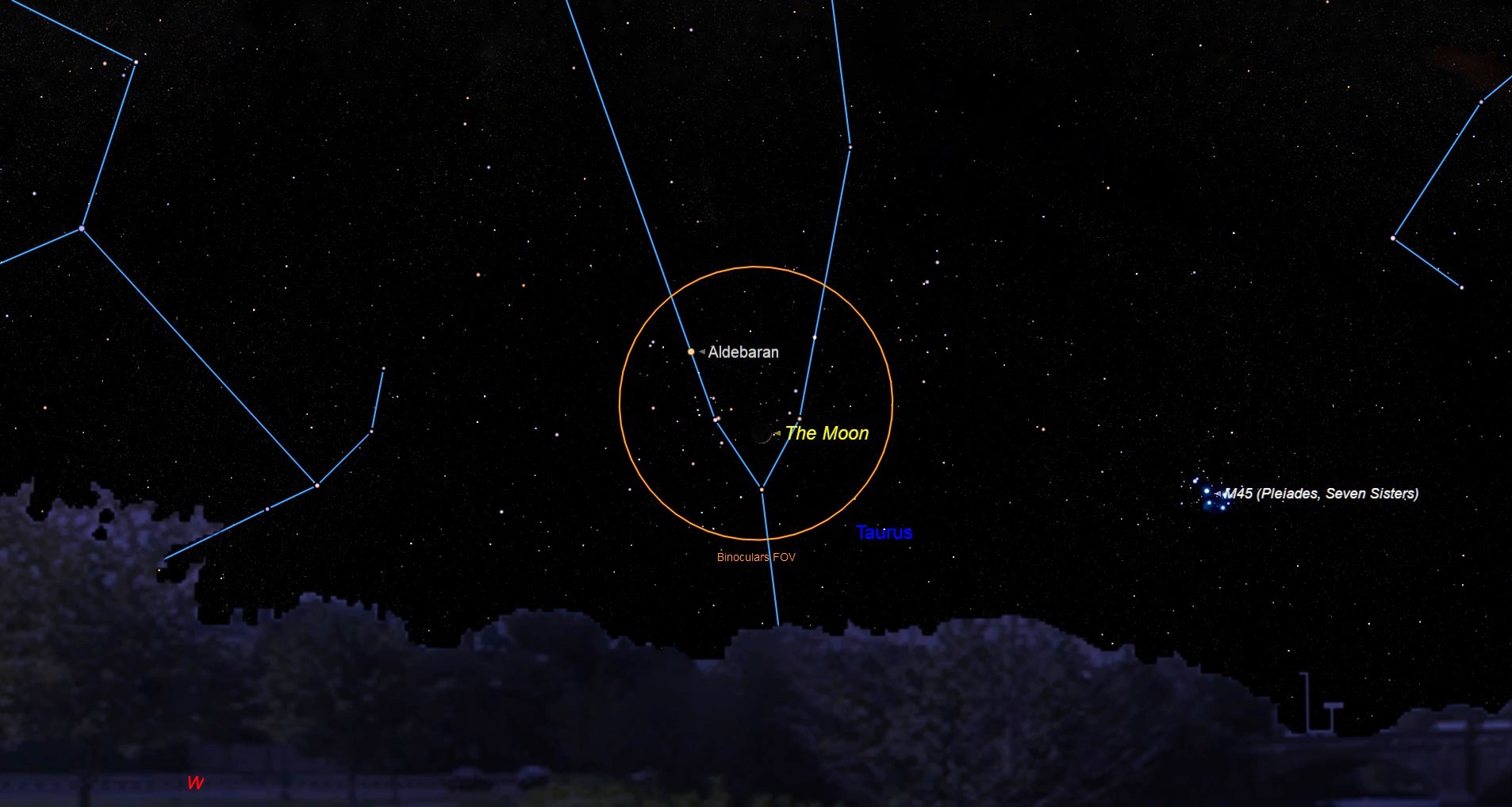Venus Visits Night Sky This Month: How to See It

Now that Venus is finally gaining prominence in the evening sky, it will team with the moon (on April 17), the Pleiades (on April 24) and more, making for some eye-catching configurations.
Low in the west-northwest sky, right after sundown on the evening of Tuesday, April 17, skywatchers will see a slender sliver of a crescent moon just two days past new phase, 5 percent illuminated. And situated about 6 degrees to the moon's upper right will be the bright and steady light of the planet Venus.
Earth's "sister planet" will get a little higher each week in April. Venus will remain small and roundish in telescopes this month, but from early April until early September, the planet will be at least 10 degrees above the horizon 45 minutes after sunset (though never very high). We will see its disk grow and gradually wane in illumination, ultimately narrowing to a crescent by late August. [Best Night Sky Events of April 2018 (Stargazing Maps)]
Moon near the V

The following night, Wednesday, be sure to look for a very pretty sight, as a slightly wider crescent moon will appear to float near the bottom of the beautiful, V-shaped Hyades star cluster, marking the face of Taurus, the Bull. Initially, in the bright evening twilight, only the moon will be visible, but once the sky has become completely dark, soon after 9 p.m. your local time, the Hyades stars should be readily evident with the unaided eye.
Interestingly, the bright orange, 1st-magnitude star Aldebaran, at the upper left of the V, is not part of the star cluster; it's just an innocent bystander. The Hyades are 140 light-years from us, but Aldebaran is much closer, at 67 light-years. Yet, by happenstance, it helps to form — along with the members of the Hyades cluster — an almost perfect letter V in our sky.
Old moon in the arms of the new
Binoculars will greatly enhance the view, not only of the cluster's individual stars, but also of the phenomenon known as Earthshine: the waxing crescent moon appearing as a thin arc of yellowish-white light enclosing a ghostly, bluish-gray ball.
For several nights up to nearly a week after the new moon, sunlight reflected from Earth will illuminate the nightside of the moon, making the satellite's entire disk visible.
Get the Space.com Newsletter
Breaking space news, the latest updates on rocket launches, skywatching events and more!
This is one of nature's most beautiful sights and recalls the old saying, "The old moon in the new moon's arms."
Hello to the Sisters
Finally, on the following Tuesday (April 24), wait at least an hour after sunset to see the Pleiades star cluster — popularly known as the "Seven Sisters" — poised beautifully about 3 and one-half degrees to the upper right of Venus (binoculars will help).
Aldebaran and the Hyades will be somewhat farther to the upper left of Venus
Joe Rao serves as an instructor and guest lecturer at New York's Hayden Planetarium. He writes about astronomy for Natural History magazine, the Farmers' Almanac and other publications, and he is also an on-camera meteorologist for Fios1 News in Rye Brook, N.Y. Follow us @Spacedotcom, Facebook and Google+. Original article on Space.com.
Join our Space Forums to keep talking space on the latest missions, night sky and more! And if you have a news tip, correction or comment, let us know at: community@space.com.

Joe Rao is Space.com's skywatching columnist, as well as a veteran meteorologist and eclipse chaser who also serves as an instructor and guest lecturer at New York's Hayden Planetarium. He writes about astronomy for Natural History magazine, Sky & Telescope and other publications. Joe is an 8-time Emmy-nominated meteorologist who served the Putnam Valley region of New York for over 21 years. You can find him on Twitter and YouTube tracking lunar and solar eclipses, meteor showers and more. To find out Joe's latest project, visit him on Twitter.









